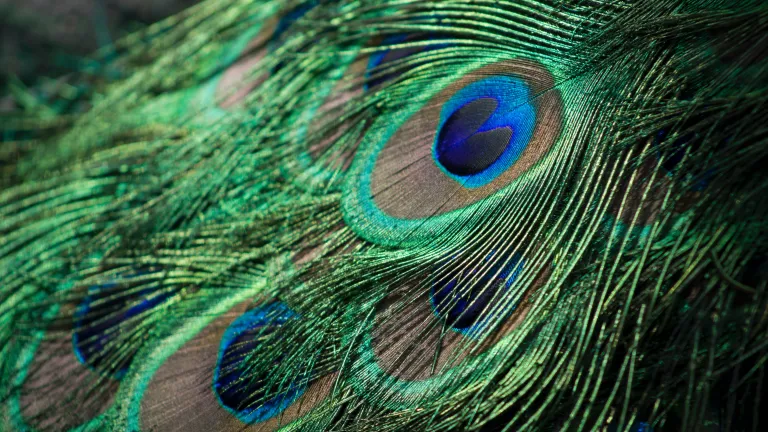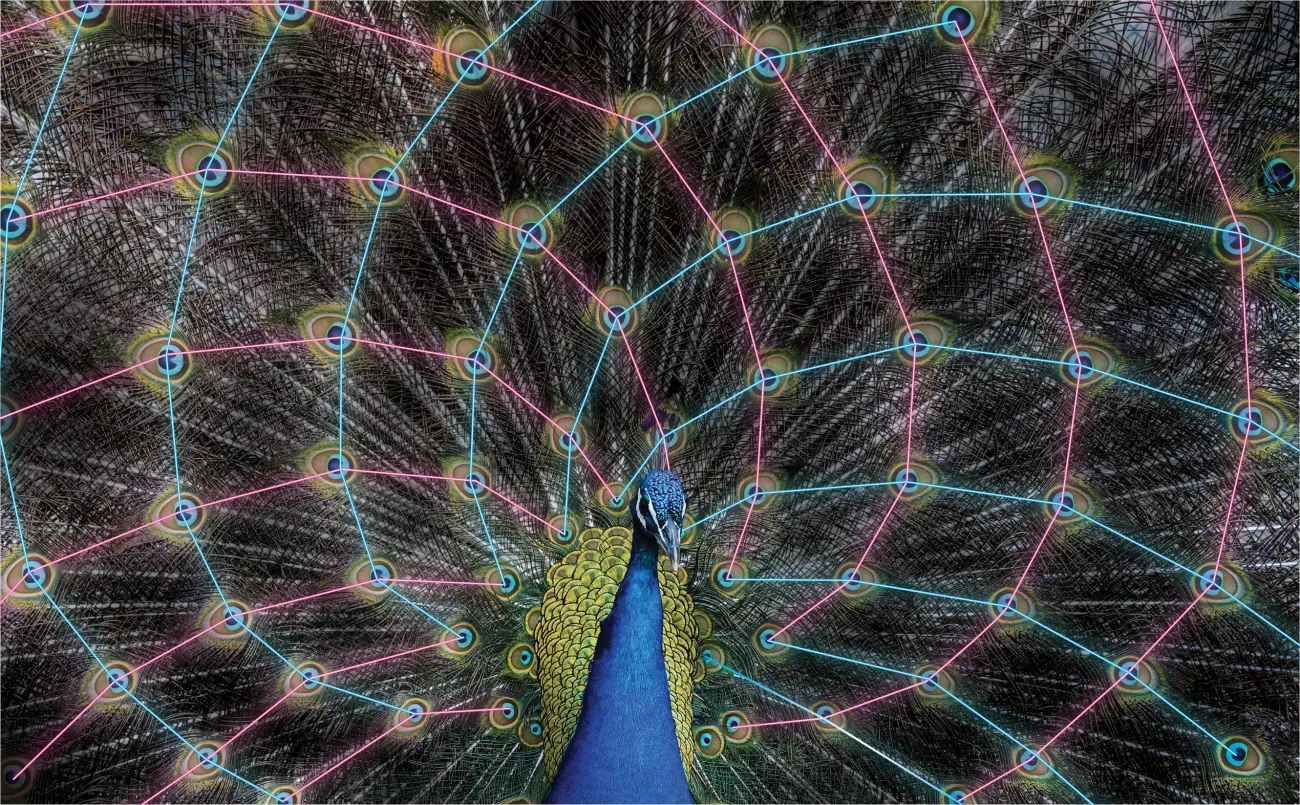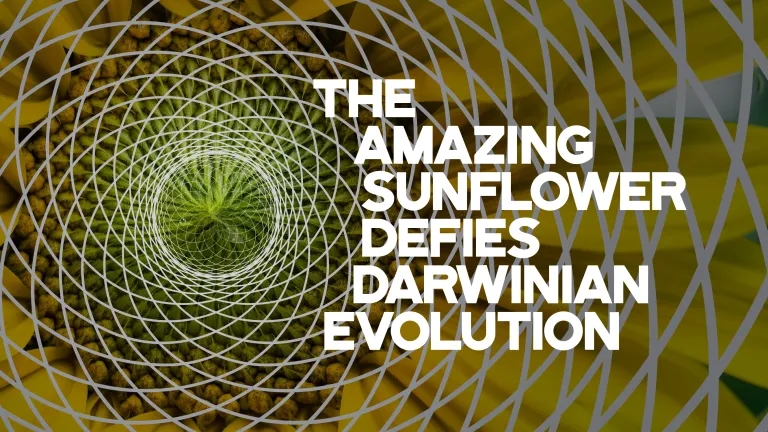How the Amazing Peacock's Feather Refutes Evolution

The ornate beauty of a peacock's feather isn't random, and didn't fit any of the proposed explanations by Darwinists.
Surely, one of the most outstanding examples of beauty in living things is when a peacock unfurls its majestic feathers to form a multicolored tail fan. It’s hard not look at it with breathless wonder.
Yet, as Charles Darwin, the main proponent of the theory of evolution, wrote to a friend, “The sight of a feather in a peacock’s tail, whenever I gaze at it, makes me sick!” (Letter to Asa Gray, April 3, 1860, The Life and Letters of Charles Darwin, Vol. 2, 1911, pp. 90–91, emphasis added throughout).
Why in the world would he say that? Normally, a naturalist like him would marvel at such an intricate, colorful and harmonious design. Yet, he did touch on the reason for his disgust in his famous book, The Origin of Species. He mentioned that some naturalists “believe that many structures have been created for the sake of beauty . . . Such doctrines, if true, would be absolutely fatal to my theory” (Mentor Edition, 1958, p. 184). In other words, when he noticed the carefully crafted masterpiece that is a peacock’s feather, he saw a serious threat to his theory of evolution!
SPECULATION ABOUT SEXUAL SELECTION
In order to combat the idea of creation for the sake of beauty, Darwin came up with yet another questionable theory, which he called “sexual selection.”
Charles Darwin, the main proponent of the theory of evolution, wrote to a friend, “The sight of a feather in a peacock’s tail, whenever I gaze at it, makes me sick!”
He speculated in The Origin of Species: “This leads me to say a few words on what I have called Sexual Selection. This form of selection depends, not on a struggle for existence in relation to other organic beings or to external conditions, but on a struggle between the individuals of one sex, generally the males, for the possession of the other sex. The result is not death to the unsuccessful competitor, but few or no offspring . . . thus Sir R. Heron has described how a pied peacock was eminently attractive to all his hen birds. I cannot here enter on the necessary details; but . . . I can see no good reason to doubt that female birds, by selecting, during thousands of generations, the most melodious or beautiful males according to their standard of beauty, might produce a marked effect” (Ibid, pp. 94-95). Notice that he wasn’t sure of his claim, but supposed it could be true.
ACTUAL RESEARCH ON THE SUBJECT
Yet, when scientists actually tested his idea that female peacock hens (peahens) were more attracted to the “most melodious or beautiful males” they found, to their dismay, that was not the case.
Painstakingly, researchers at the University of Tokyo studied peacocks and peahens in a zoo for seven years. They carefully photographed each male during the tail-fanning display ritual and counted the number of eyespots—a measure of the tail’s quality. They next examined whether females chose mates with the best-quality tails. During this period of observation, the scientists observed 268 successful matings. But to their surprise, they found that females mated with drab-tailed peacocks just as often as with the flashy males! They concluded that the peacocks’ tails were not the reason for the females’ attraction to a partner—a result at odds with Darwin’s theory of sexual selection (Animal Behaviour, April, 2008, pp. 1209-1219).
Let’s take a closer look at a peacock’s feather, which made Darwin nauseous because it challenged his theory that there was no proof of God in nature. It is ironic that in the Bible, God once asked a man called Job: “Did you give the beautiful wings to the peacocks?” (Job 39:13, Modern English Version). Job had questioned God’s wisdom—a mistake Darwin would later duplicate. Clearly, neither Job nor Darwin ever created any such thing—or for that matter, anything else!

The peacock's feathers form a complex pattern with pairs of complementary spirals in opposing directions.
THREE FEATURES OF A PEACOCK’S FEATHERS THAT DEFY DARWINIAN EVOLUTION
1. Iridescence
What causes the peacock’s brilliant multicolored sheen in the sunlight?
Scientists were puzzled about those shining colors until, under the microscope, they found the peacock’s feathers do not have colored pigments as they once thought; but rather, a prism-like structure resembling overlaid roof tiles. Each of these tiles refracts light at a carefully-adjusted angle to give it that stunning luminous color. It is called iridescence and is also found—among other creatures—in hummingbirds, ducks and butterflies.
2. Eye Spots
Some notable features of the remarkable patterns of a peacock’s fan are the beautiful eye spots. An average peacock has around 200 tail feathers with some 170 eye spots. Normally, the feathers are shed each year and then regrow, all repeating the same precise pattern. It is difficult to imagine all these eye spots gradually evolving, with each barb of the feather fitting its precise location to produce such astounding beauty.
3. Fibonacci Sequence
Perhaps the most uncanny evidence of design in a peacock’s feather has to do with its intricate spiral design. Spirals like this are found throughout nature (sunflowers, pinecones and pineapples, for instance) and are often described as the “Fibonacci sequence” in mathematics. The peacock’s feathers form a complex pattern with pairs of complementary spirals in opposing directions (see graphic).
These are just some examples of awesome design in nature that undermine Darwin’s famous theory of evolution. At the molecular level, the elaborate patterns on the peacock’s feathers are ultimately possible because of automated molecular machines and genetic codes that do God’s bidding inside the cell, showing the unmistakable evidence of intelligent design.
As Michael Behe answered a religious skeptic: “To be convinced of the existence of God, the skeptical [biologist Jerry] Coyne wants a nine-hundred-foot-tall Jesus to appear to the residents of New York City, or something equally dramatic. Some of us [biochemists] view the genetic code and the intricate molecular machinery of life as rather more spectacular than a supersized apparition” (Ibid., p. 76).
The theory of evolution, thanks to mounting biochemical evidence against it, is quietly being discarded by an increasing number of scientists. It is turning out to be a bygone, 19th century idea from Charles Darwin that is unable to explain the complexity of life, biological nanomachines and the genetic code at the molecular level.
Its refutation brings to mind 1 Corinthians 3:19, “God catches the wise when they try to outsmart him” (Contemporary English version). While scientific research provides much value to human life, let us remember the greatest scientist of all—the Creator of the universe! CC





